Gardening within striking distance of the sea can be fraught with difficulties. Christopher Lloyd, the gardener and writer of Great Dixter fame, once suggested that one often has to choose between having a view of the sea or having a garden, and most gardeners would agree that it is rare to have both with any success. Yet on a secluded, craggy headland within a stone’s throw from the sea, is a garden billowing with delicate herbaceous flowers and soft grasses and an amazing view. The garden is only three years old and was designed by Duncan Nuttall who built and planted the entire garden with his colleague Will Cumberlidge.
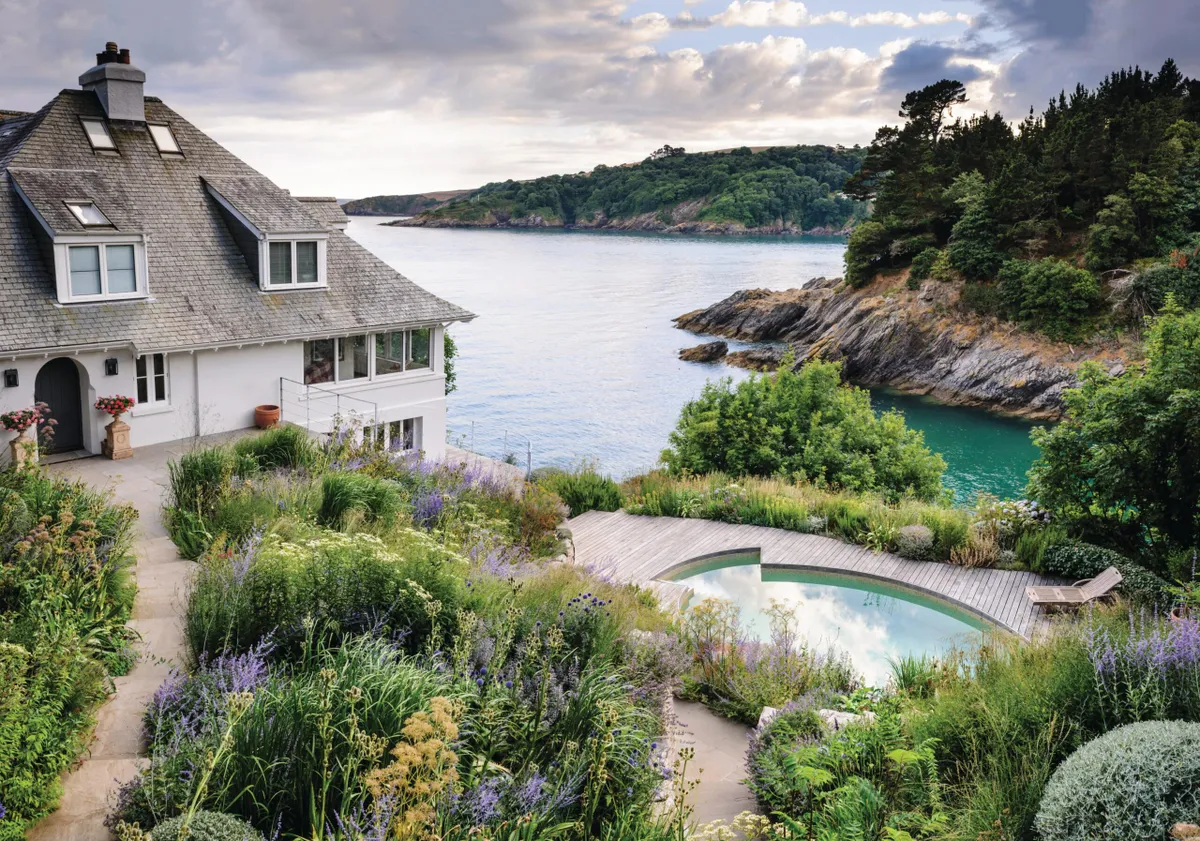
They were initially commissioned by the owners to reconfigure an old pump room in the garden to create a small, look-out reading room built with green oak and glass. The project soon evolved into the redevelopment of the area around the house, and a space leading down a precipitous slope all the way to the tideline.
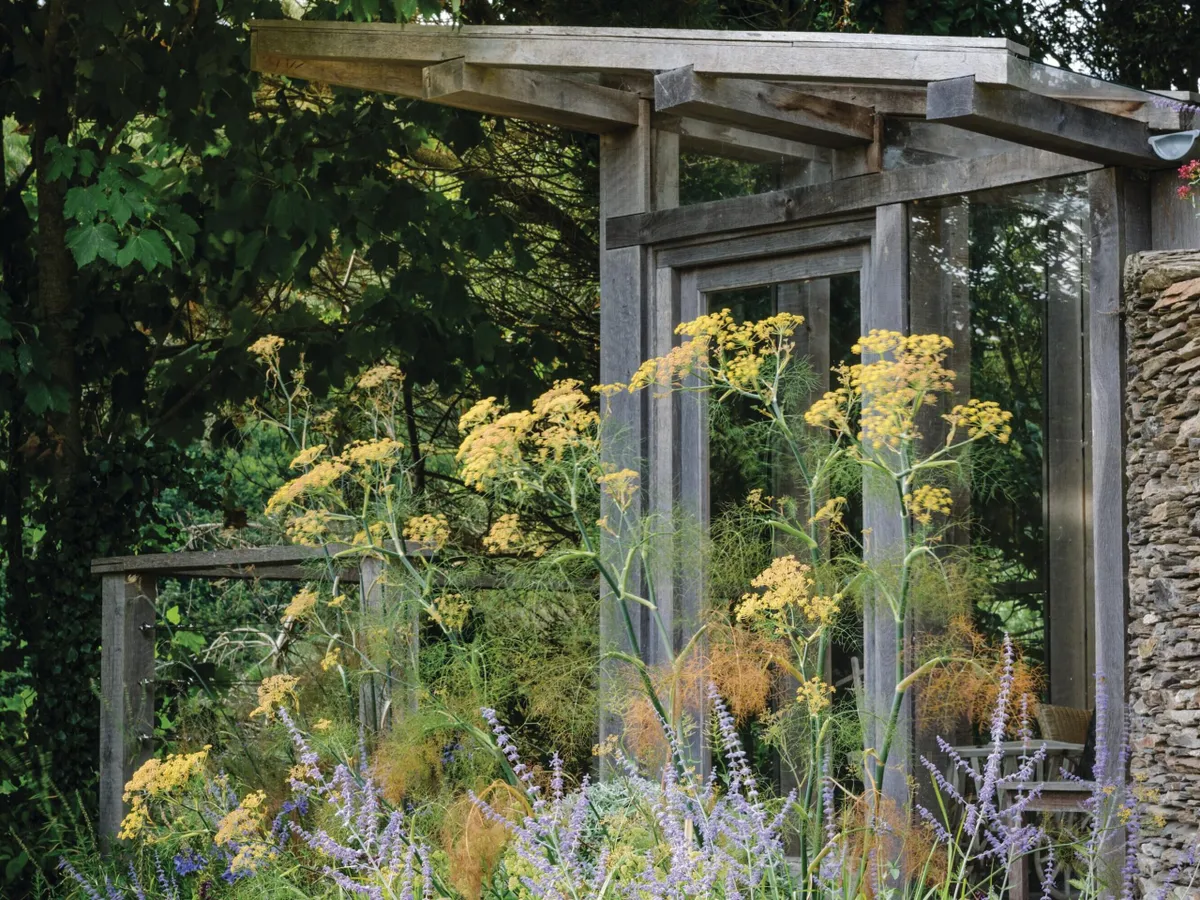
The approach to the house itself was originally an unflattering tarmac drive with parking next to the house and rendered walls that impeded views of the sea-creek below. Duncan explains that the space lacked any connection with the surrounding landscape and that the garden areas were quite disjointed, with planting of the kind typically associated with the coast – phormiums, cordylines, olearias and the like. He wanted to create unity between the garden, the surrounding countryside and the seascape beyond. The first step was to remove the driveway, digging down into the bedrock to create depth for new borders, and harvesting the stone beneath for use in the beautiful dry-stone walls that define the space and retain the soil in the sloping borders. All of the stone used was, at one time or another, quarried directly from the site. The parking area is now situated atop the slope above the house, and visitors are greeted with spectacular views of the garden and stone walls that gently undulate down to the house and sea beyond.
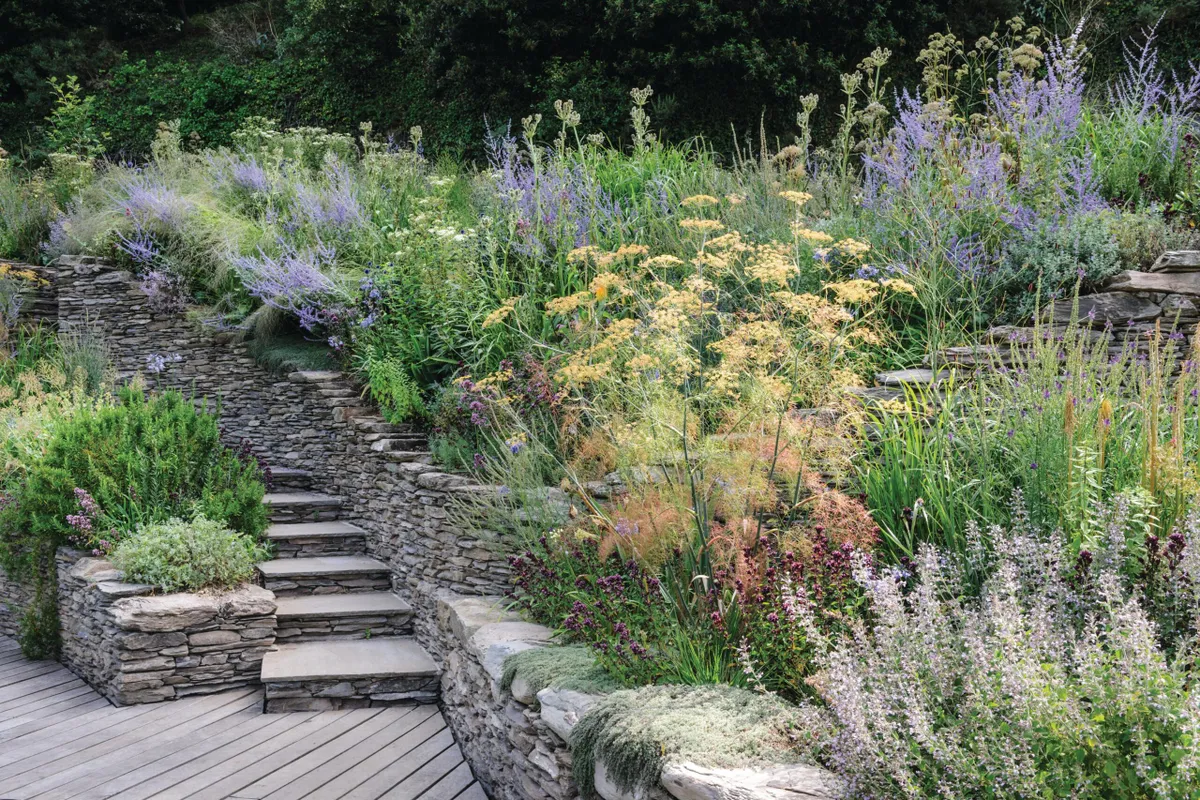
A path leads the way through the borders towards the house in a more leisurely, atmospheric approach. The style of planting could be described as New Perennial with a coastal slant. For Duncan, it has been a matter of trial and error to find out what does and doesn’t work in this extreme location. Duncan treated the sheltered areas, further away from the sea, more like an inland garden. Symphyotrichum turbinellum, Doellingeria umbellata and Aloysia citrodora perform very well in this environment. Nearer to the shore, halophytic (salt-tolerant) plants ,such as Hylotelephium telephium subsp. ruprechtii, Rosmarinus officinalis ‘Tuscan Blue’, Perovskia ‘Blue Spire’, Centranthus ruber and Eryngium agavifolium can thrive in the saltladen spray.
See our article on coastal plants.
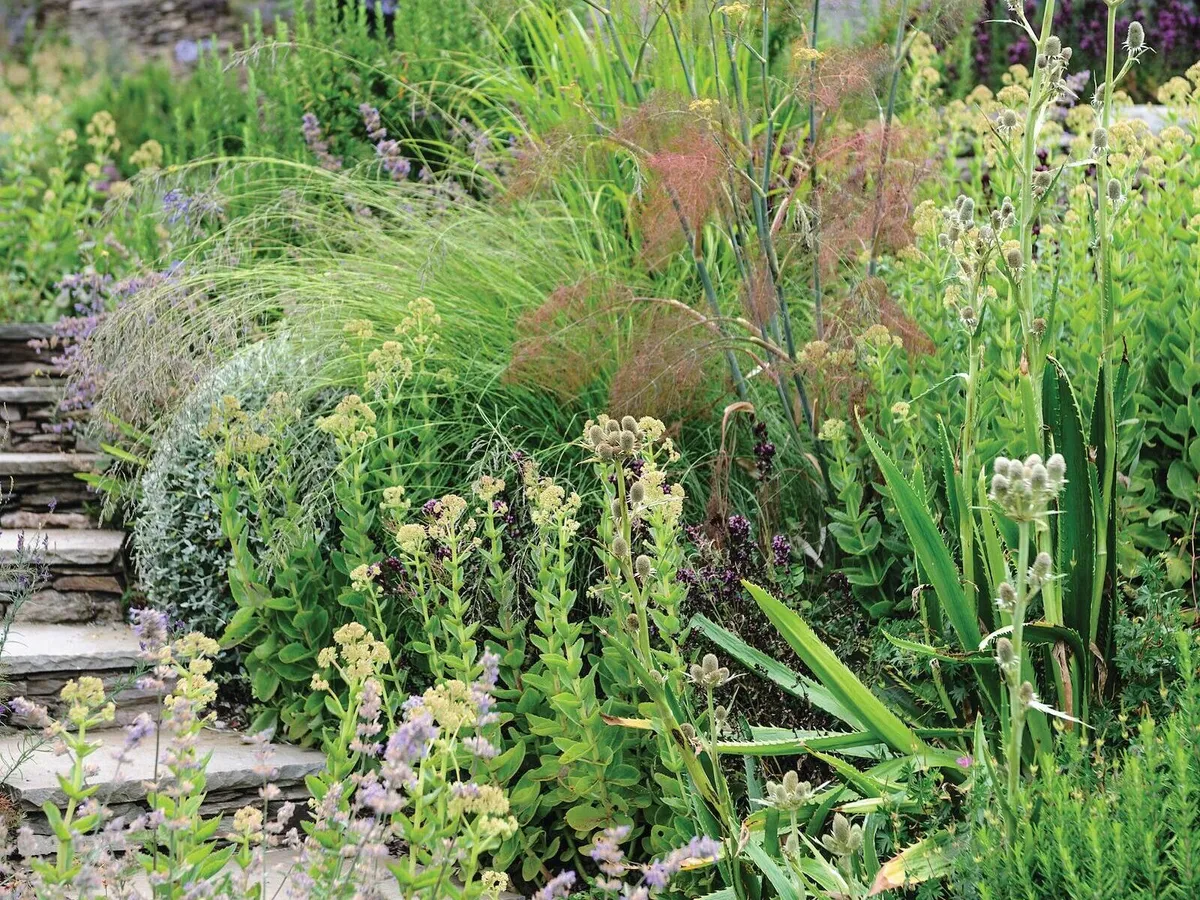
The tall, airy, self-sowing Eryngium ebracteatum has done particularly well here and brings a lovely natural continuity to the planting as it weaves its way through the borders. Grasses add fluidity to the composition; Calamagrostis brachytricha and Eragrostis curvula (love grass) have a strong presence. Among the soft, lithe perennials and grasses, Duncan has positioned the more static Myrtus communis and Teucrium fruticans in a way that complements the rocky headlands that jut out across the bay.
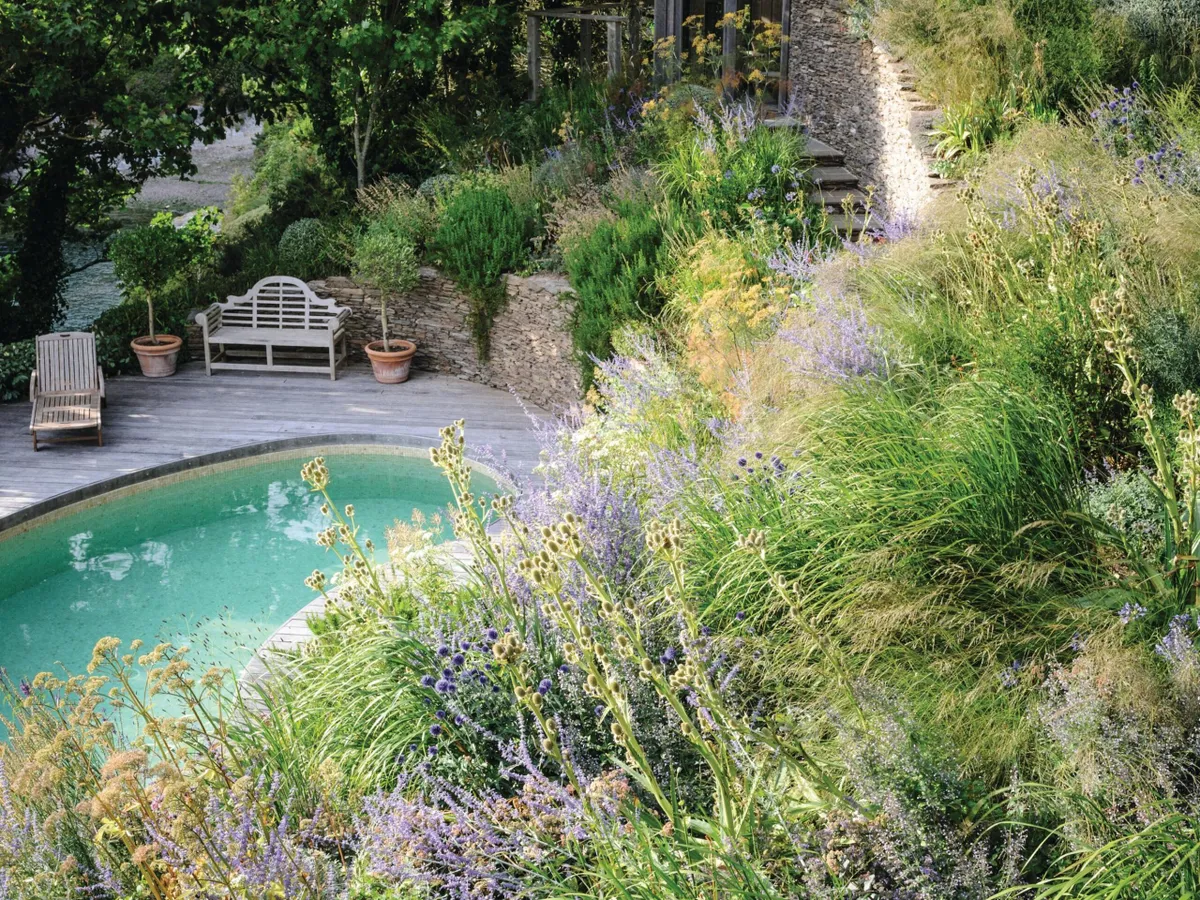
The view across the garden is now much more in keeping with the landscape and seascape. The sea of perennials and grasses blurs in the wind, contrasting markedly with clipped shrubs and, in an abstract way, mimicking the movement of the sea against the steadfast rocky coastline. The garden wraps around the house and gently slopes down to a bleached, oak deck and pool. Render walls have been replaced with smart, metal, see-through railings, revealing spectacular views across the bay. Beyond the deck, the garden drops away, tumbling down the cliff face towards the water’s edge. Here Duncan has opted to tread carefully with the design, adopting a more natural style. He cites the French gardener Gilles Clément (in particular his work Le Belvédère des Lichens), as an inspiration. The idea is to work with, not against nature. As Duncan explains, it’s a matter of embracing and celebrating what grows here naturally and limiting additional planting.
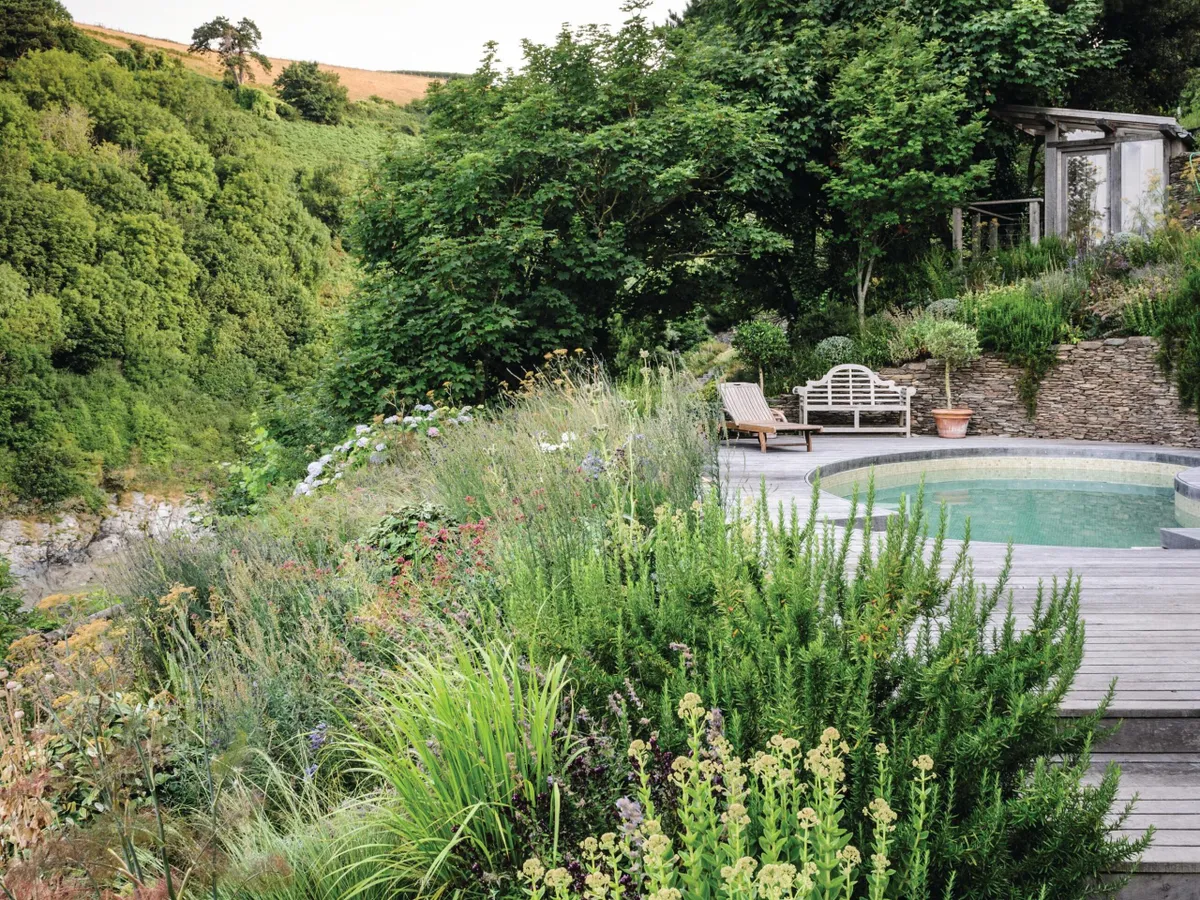
This spray zone, just above the tidal area, bears the brunt of the winter storms. The plants have to be able to take the salt spray head on and cope with the searing summer sun. Specialised native flora, such as thrift and sea cabbage, survive by inhabiting the nooks and crannies in the rocks. Lichens decorate the rocks with shades of charcoal, grey-green and orange-yellow, and are included as part of the garden. To allow access to this special place, steps have been carefully constructed from rocks harvested at low tide, and then installed into the cliff face. This was done with the utmost care so as not to disturb the existing plants. The steps lead down to the water and flat, oak decking, or puddles, have been built into the rocks, like abstract rock pools.
Duncan and Will have made a beautiful garden on a difficult site close to the sea. The garden connects seamlessly with the wider landscape, and is a wonderful exhibition of what is possible when the artist and the gardener collaborate.
USEFUL INFORMATION
For more information on Duncan’s work visit duncannuttall.co.uk